The Waldorf Astoria claims to be a ‘living Art Deco museum’, and from the luxurious lobby it certainly appears to be so, and one with plenty of history, so when I saw in the compendium in our room that they host small group tours for guests, I thought it would be an excellent way to learn more about the history of the building, the artworks and its famous guests over the years.
It seems the original Waldorf hotel was built by William Waldorf Astor in 1893, out of a severe dislike for his aunt, Caroline Webster Schermerhorn Astor. You see he deliberately built the unlucky 13-story high Waldorf Hotel right next door to her 5th Avenue home; apparently just to annoy her. By all accounts she was a terribly unpleasant New York socialite who maintained a circle of only 400 people ‘worth knowing’, and if you were not in this circle she would refuse to acknowledge your existence even if you went right up to her and said ‘Good day’. In addition to her dreadfully snobby habits, she was also a terrible bigot and harboured a long abiding hatred towards the Jewish community. Oh well. Against expectations, the Waldorf, being the tallest hotel in the world at that time, did roaring trade and became very popular under the guidance of a general manager named Lucius Bloomer.
Well, Caroline’s son, John Jacob Astor IV (most famous for having perished in 1914 in the Titanic disaster when making the transAtlantic crossing with his scandalous pregnant teenage wife, Madeline) was having none of this insulting his mother stuff, so he encouraged her to move to the Upper East side where he built her a beautiful new home – complete with ballroom that would accommodate precisely 400 people and no more. After that, he decided to build a second hotel on the site where his mother’s house was, right next door to the William Waldorf Astor’s, Waldorf Hotel – and of course he made it four stories higher than cousin William’s hotel. John Jacob Astor IV contacted the general manager of the Waldorf, Lucius Bloomer and asked him if he would manage the two hotels together (seems a bit incongruous with the rest of this oneupmanship story, but who knows how they did business then?), which he agreed to do and had suggested that the two hotels be joined together by an interior rouge marble walkway, which later became known as ‘Peacock Alley’ given the propensity of New York’s socialites for strutting back and forth between the hotels to see, and be seen.
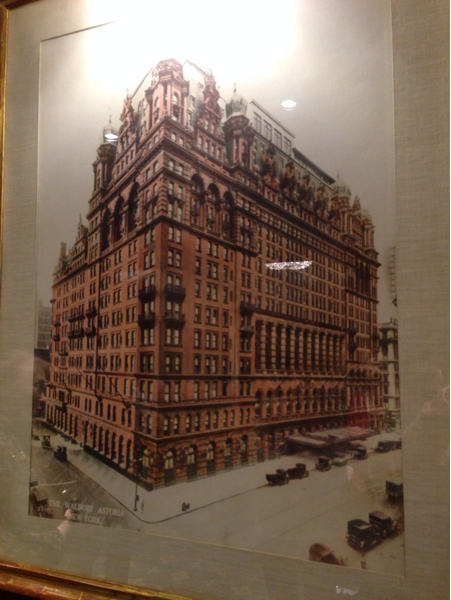 Incidentally, Peacock Alley was also the place where survivors of the Titanic were brought to be reunited with their families after the disaster. Eventually, these two hotels were torn down to make way for the Empire State Building which was built in their place, and Lucius Bloomer went to Florida to retire.
Incidentally, Peacock Alley was also the place where survivors of the Titanic were brought to be reunited with their families after the disaster. Eventually, these two hotels were torn down to make way for the Empire State Building which was built in their place, and Lucius Bloomer went to Florida to retire.
New York however, was not happy at losing it’s now famous Waldorf=Astoria (a name that Lucius Bloomer registered himself, after having convinced Astor to not call his hotel ‘The Schermerhorn’ after his mother, due to the likelihood that Americans would constantly mispronounce it – btw, Caroline’s home on the Upper West side was eventually torn down to make way for a Jewish temple! Talk about serendipity! – and eventually, a scheme was put in place to build the current Waldorf=Astoria (the ‘=’ sign was apparently supposed to be visually reminiscent of Peacock Alley) and contracts were signed literally one day before the Black Friday stock market crash in 1929, which heralded the beginning of the Great Depression. It turns out The Depression did not overly much hinder the building of this grand hotel which opened in 193. In fact, the sudden drop in the price of labour actually helped get things off the ground. Lucius Bloomer was encouraged out of retirement and out of Florida to ensure that all things would be done, ‘just so’. And by all accounts, the new hotel flourished to be the new epicentre of all things high society and full of influential visitors, as its predecessor was.
Our little tour started off at the famous clock in the Gentlemen’s Lobby – so named as this is where the men would settle their bills and deal with the concierge staff, ladies were not prohibited from the Gentlemen’s Lobby, they were however properly bred ladies were strongly discouraged from dealing with anything so gauche as ‘the money’. The Gentlemen’s Lobby is designed with black marble and dark timbers and has a sombre smoking room look about it for this reason. 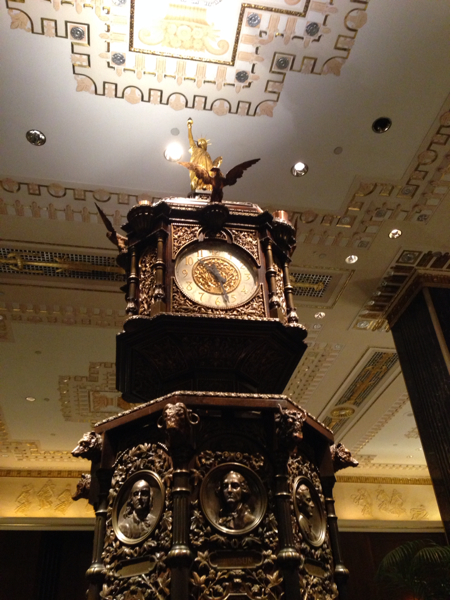 The clock was a gift from Queen Victoria to the Chicago World’s Fair, which like many other World Fairs and expositions was broke by the bottom line and resorted to selling things off – including gifts from foreign heads of state.
The clock was a gift from Queen Victoria to the Chicago World’s Fair, which like many other World Fairs and expositions was broke by the bottom line and resorted to selling things off – including gifts from foreign heads of state. 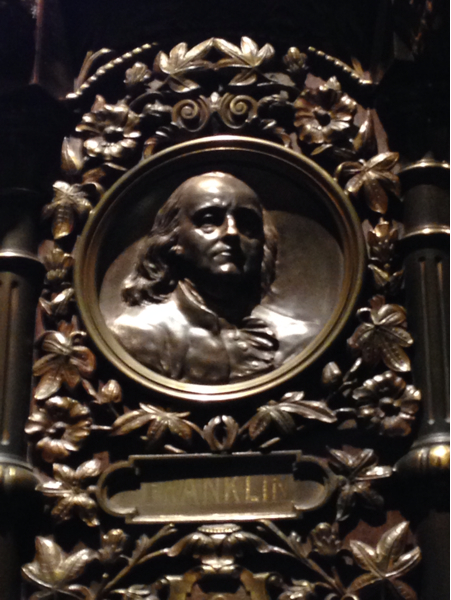 While the clock was already very grand, apparently John Jacob Astor had decided to add a three-foot black marble plinth to the clock to give it even more grandeur, and a likeness of the Statue of Liberty to the top. Queen Victoria is said to have been seriously displeased at the addition of a FRENCH statue to their English clock and apparently demanded it back. Astor however, claiming he was really quite fond of it, and having paid good money for it, refused to acquiesce to her demands. Our tour guide for the morning, Karen, is a local Historian who was full of interesting tidbits of information about the hotel and 19th century New York society.
While the clock was already very grand, apparently John Jacob Astor had decided to add a three-foot black marble plinth to the clock to give it even more grandeur, and a likeness of the Statue of Liberty to the top. Queen Victoria is said to have been seriously displeased at the addition of a FRENCH statue to their English clock and apparently demanded it back. Astor however, claiming he was really quite fond of it, and having paid good money for it, refused to acquiesce to her demands. Our tour guide for the morning, Karen, is a local Historian who was full of interesting tidbits of information about the hotel and 19th century New York society.
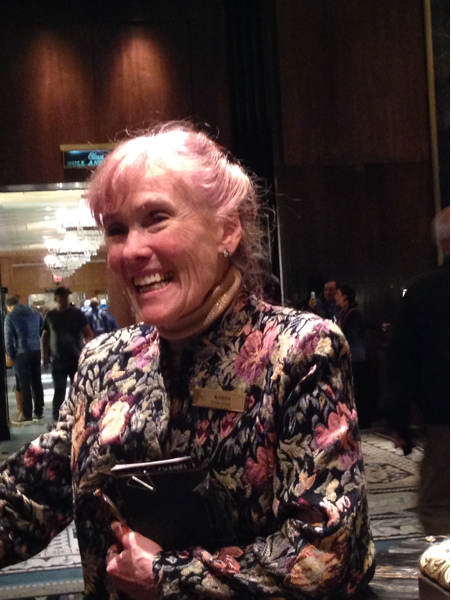
Next, we went on through to the Ladies’ Lobby, where the womenfolk would be able to congregate while awaiting their menfolk to deal with the bills. The decor in this large space is much airier and lighter – it is surrounded by fresco paintings depicting scenes of recreations available in New York, and has an enormous mosaic on the floor, made out of 150,000 pieces of marble that came from six different countries. The mosaic took nine years to complete and was done entirely *after* the hotel opened – the work being completed at night from 1am to 9am while the patrons slept and it was covered by an enormous rug during the day.
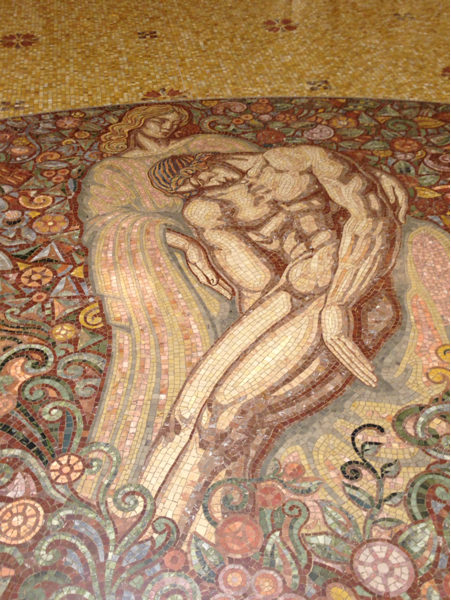
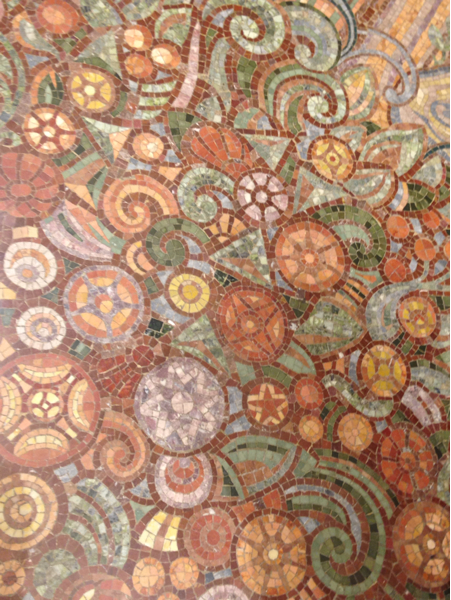
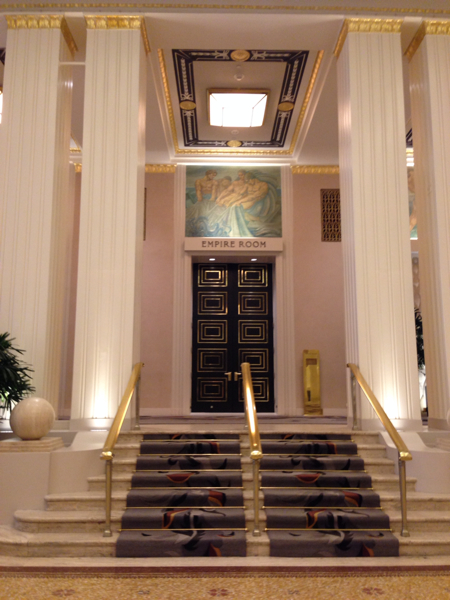
During the 1960s, some bright spark had the great idea to modernize the hotel; all the walls were painted white, the frescoes were boarded over and the plywood covering them was painted white, even the ceiling mouldings were covered and painted white and the mosaic on the floor was covered with thick wall to wall carpet. It was not until a small flooding incident in one of the ballrooms in the mid-80s, which saw a hasty removal of the carpet, that the beautiful mosaic was rediscovered as everyone had forgotten it was there! It was at this point that decisions were made to return the hotel to its original 1930s Art Deco splendour… the original colours were sourced, the mosaic shown the light of day and the frescos were rediscovered as well.
Coming off the Ladies’ Lobby are two rooms, often used for weddings and small functions (by small I mean holding 100-150 persons). We went into the Vanderbuilt Room to have a look at the sort of room you could host your private function in, if you had the money – apparently there are several prominent high schools that hold their annual proms here, and birthday parties and engagement parties, as well as business conferences, are also quite common. All the chandeliers in the hotel are made from Austrian crystal, with the exception of the one Waterford crystal chandelier that hangs in the Grand Ballroom apparently.
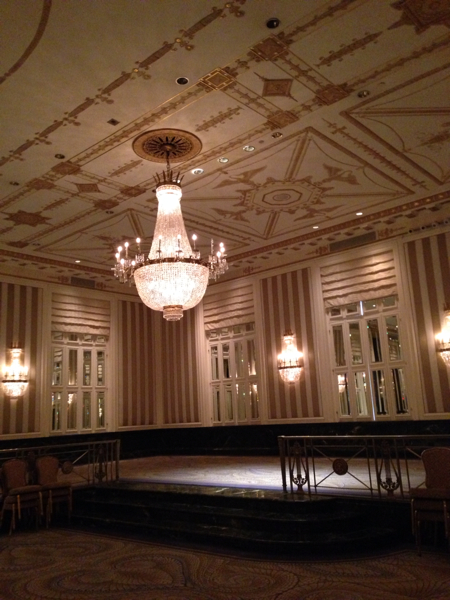
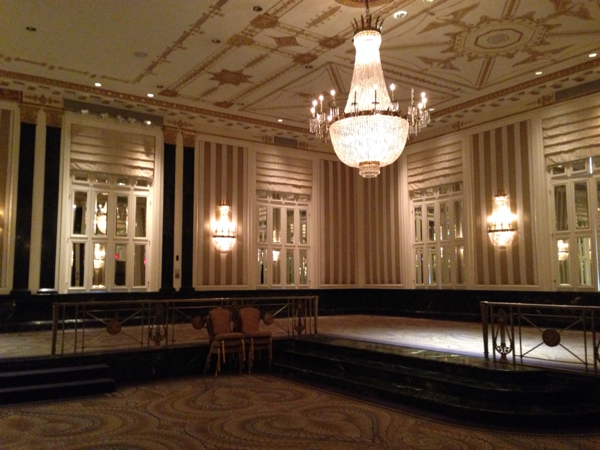
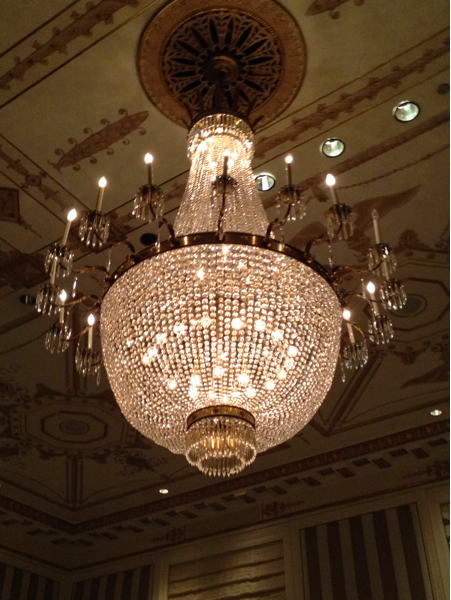
We moved through a series of entrance lobbies on our way to the Starlight Ballroom, this one with a lovely black and white Art Deco marble floor and a feathered chandelier that used to hang in the Starlight Ballroom, but was replaced by more Austrian crystal ones. It seems the proprietors have had a very good habit of never throwing things out, but rather putting things into storage and much has been re-purposed over the years.
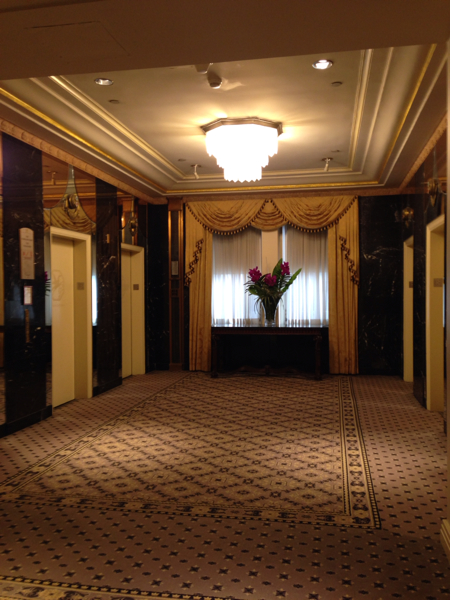
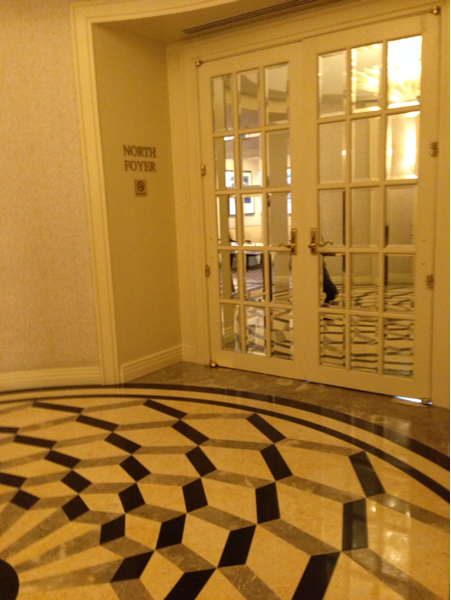
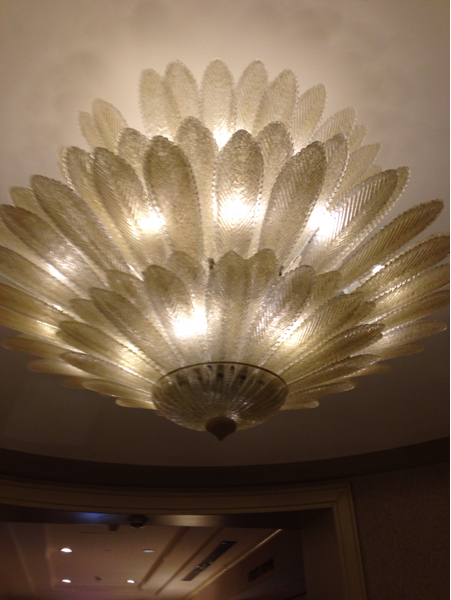
Next, we went to the Starlight Ballroom which is on the 18th floor, and was named such because, in 1931, it was built with a retractable roof so that patrons could literally dine and dance under the stars. It also has a terrace off the entire length of it that was used for hotel guests to have breakfasts but is now only used during functions. The ceiling no longer retracts to see the stars, as this large flat section of the roof turned out to be the only space large enough to accommodate the hotel’s air conditioning system when it was installed and a solid roof was built and the air con went in.
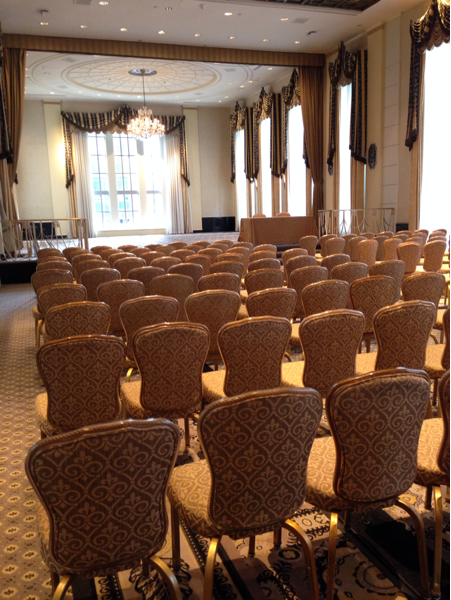
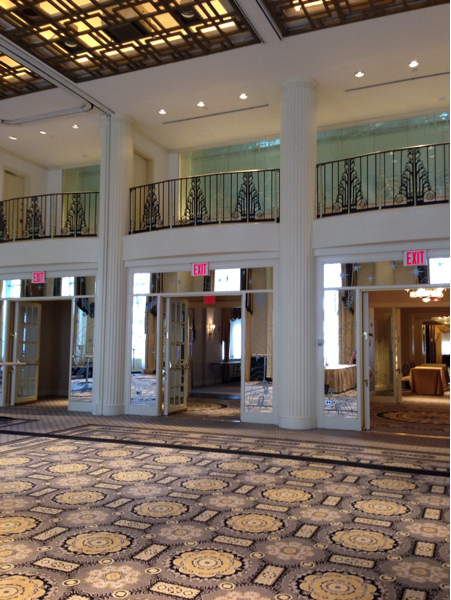
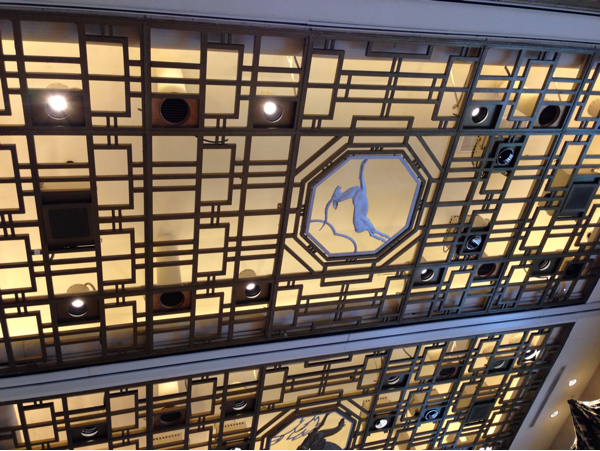
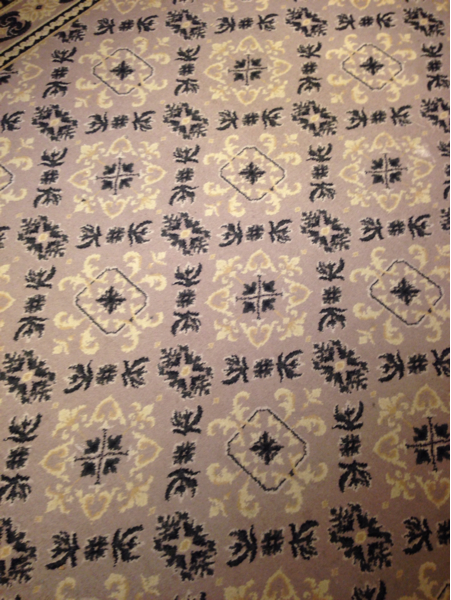
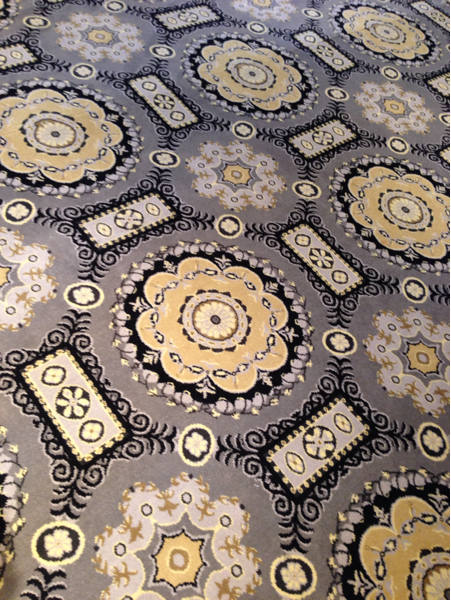
After wandering around the Starlight Ballroom, we went for a look in the Waldorf Towers. The Towers is a section of the hotel which contains only suites and which are available for permanent residency. Some of the residents have included Frank Sinatra, Martin Scorcese, Marilyn Monroe, and Paris Hilton who grew up here as a child and many other famous people. Every president since Hoover has stayed at the Waldorf (including JFK, who apparently stayed here with his family; he kept his affairs at the Carlisle, of course). We managed to have a sneak peak of the Herbert Hoover Suite which happened to be vacant at the moment.
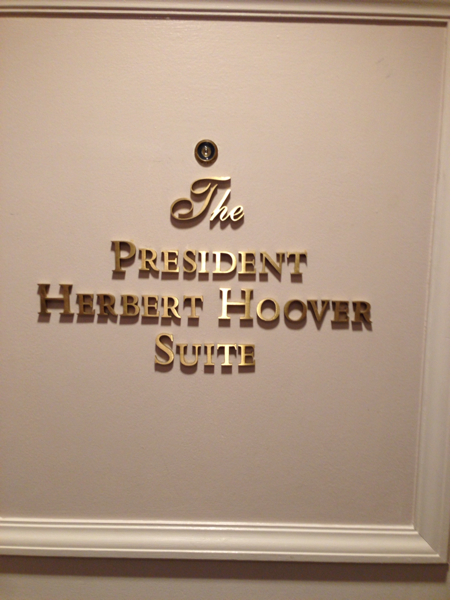
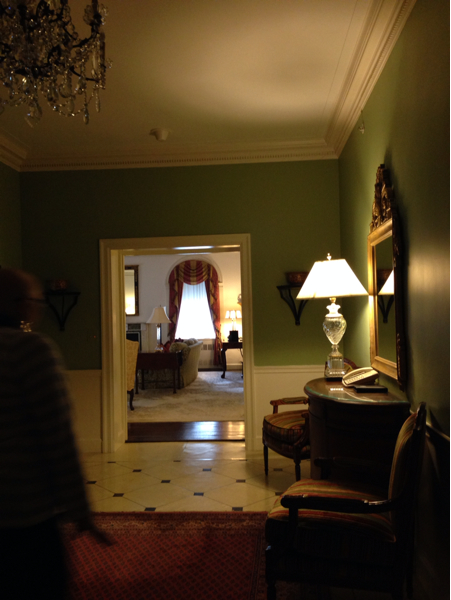
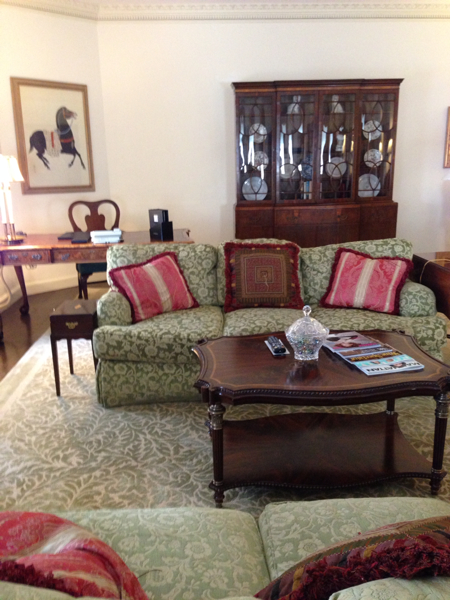
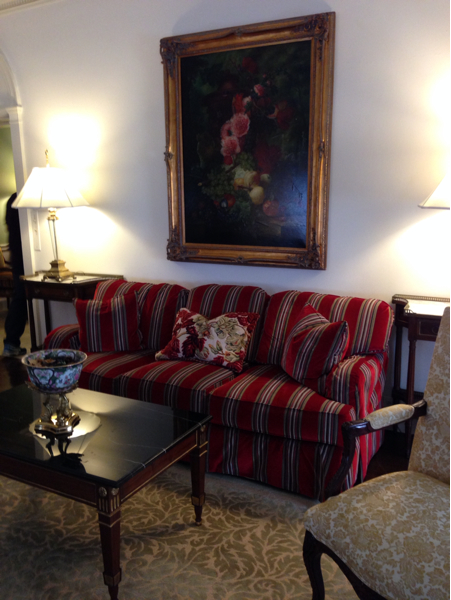
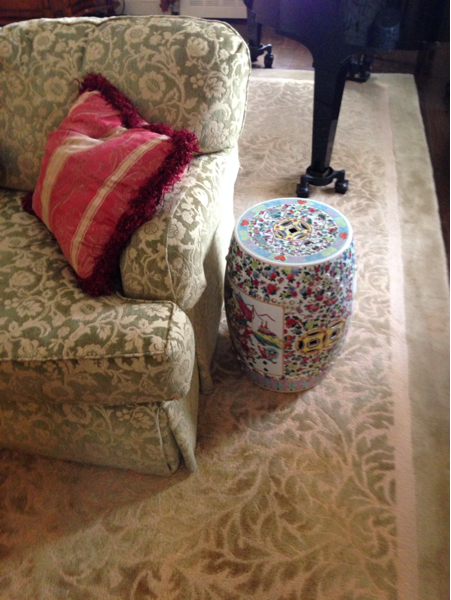
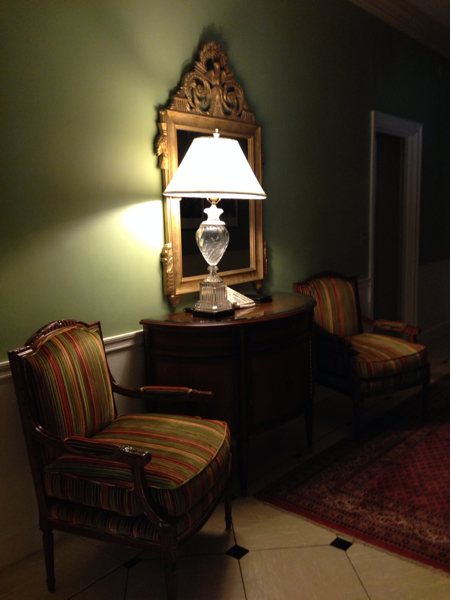
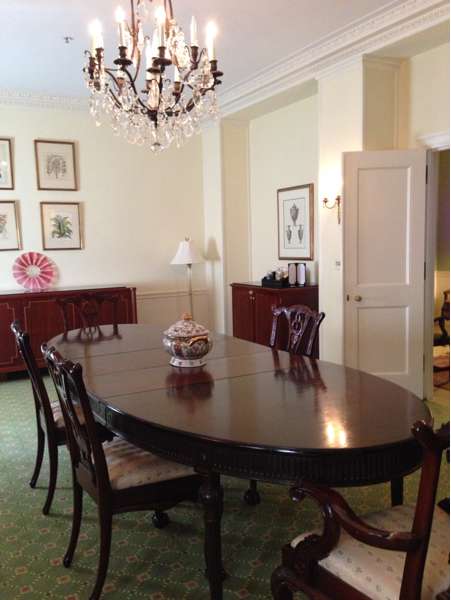
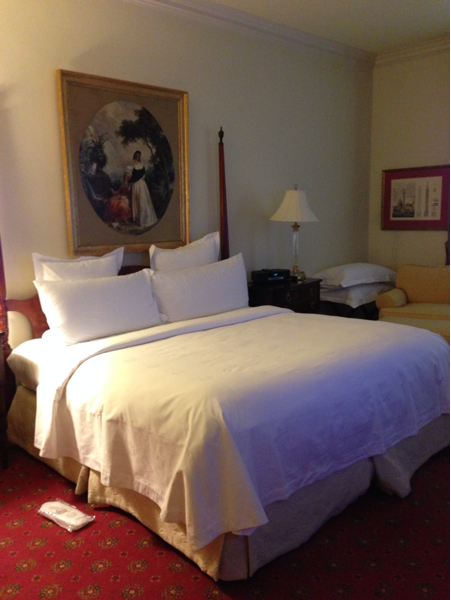 Every little detail was immaculate and could be yours for as little as $USD899 a night.
Every little detail was immaculate and could be yours for as little as $USD899 a night.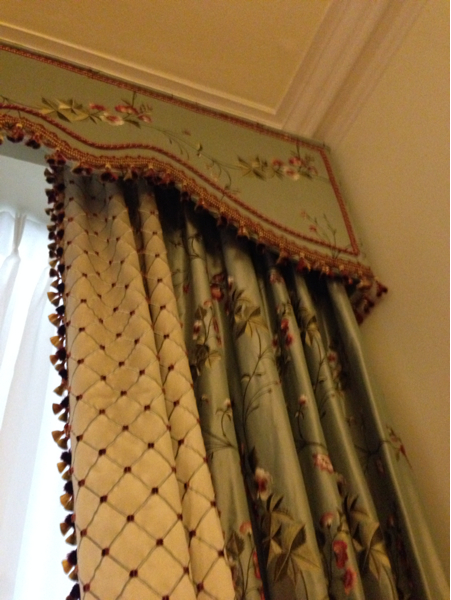
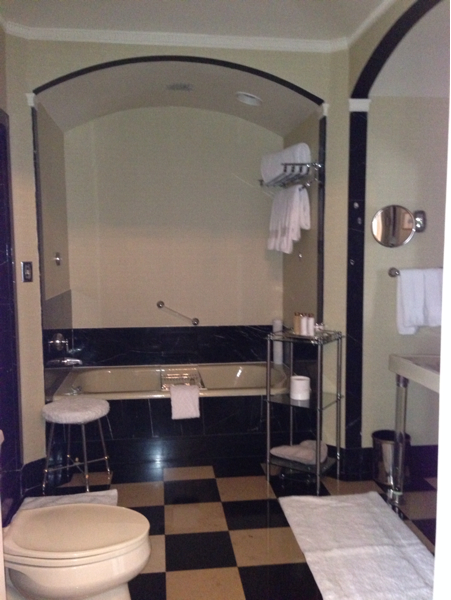 All the furniture for the suites, all the antiques, the mantelpieces and many of the light fixtures etc. were all bought in Europe in post-war homes that needed refurbishing. The architects and designers (whose names I have forgotten just now) spent months trolling through homes that had been bombed and snapping up paintings, furniture, ceiling frescos and whatever they could get their hands on to outfit the Towers.
All the furniture for the suites, all the antiques, the mantelpieces and many of the light fixtures etc. were all bought in Europe in post-war homes that needed refurbishing. The architects and designers (whose names I have forgotten just now) spent months trolling through homes that had been bombed and snapping up paintings, furniture, ceiling frescos and whatever they could get their hands on to outfit the Towers.
After this we went back downstairs to the Grand Ballroom, which is designed to look like an Italian opera house… and here is where we found the only chandelier in the hotel which Karen assured us is Waterford crystal darlings, not that Austrian nonsense.
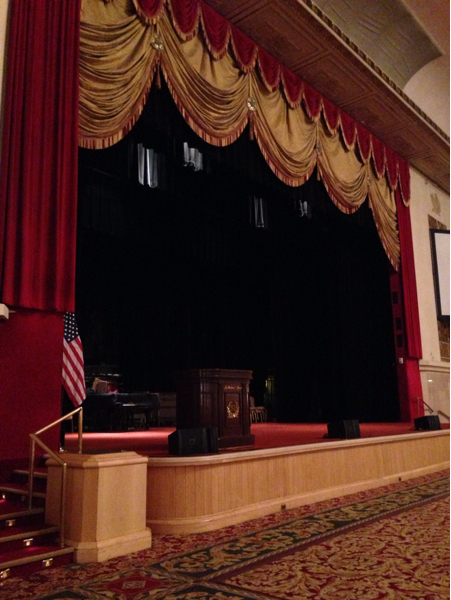
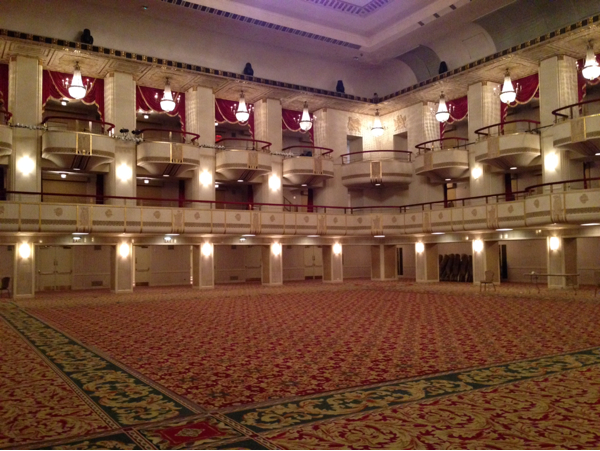
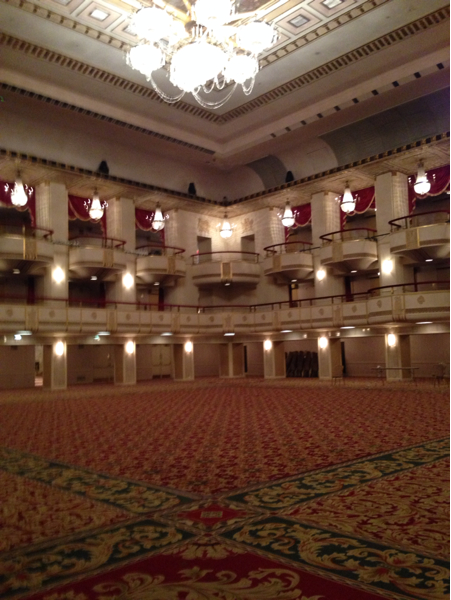
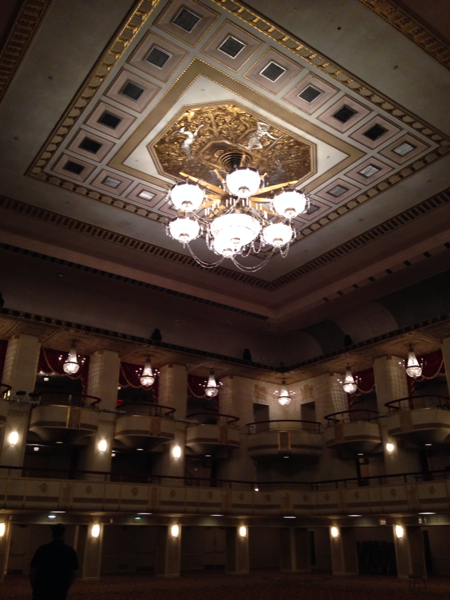
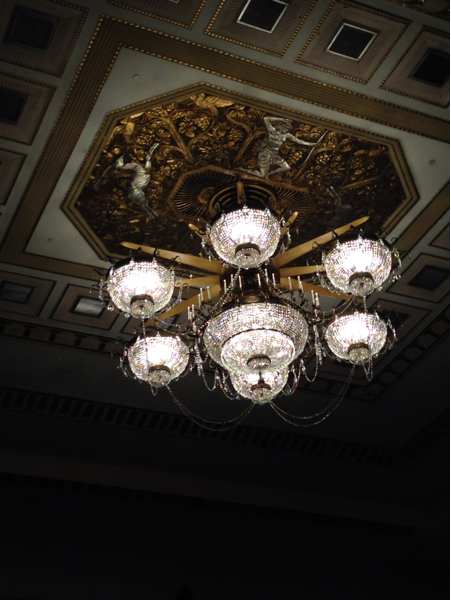
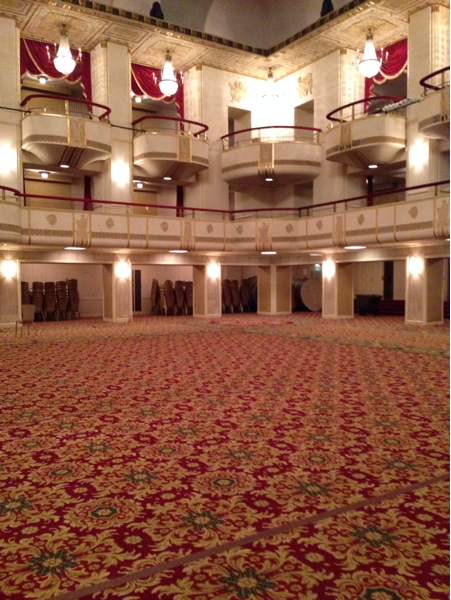
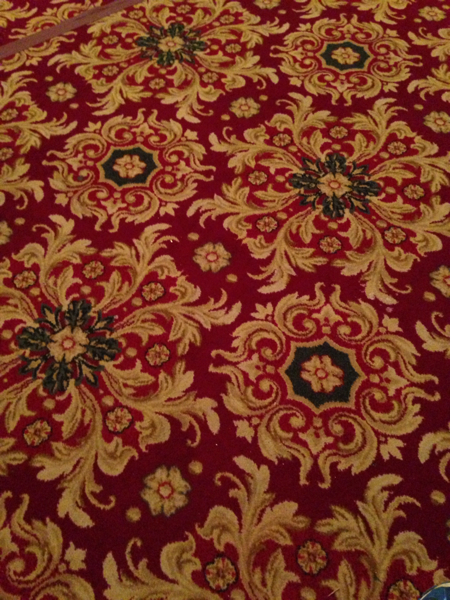
The Grand Ballroom has several antechambers coming off it that accommodate guests for pre-ball aperitifs, rooms to go to have supper, and cloak check rooms. All luxuriously appointed and all available for hire for special occasions. We didn’t get any indication of how much these rooms might cost to hire, and I rather gather that if you had to ask… you probably couldn’t afford it.
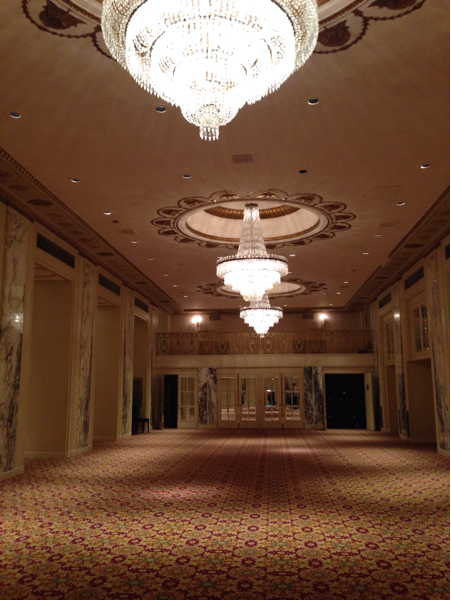
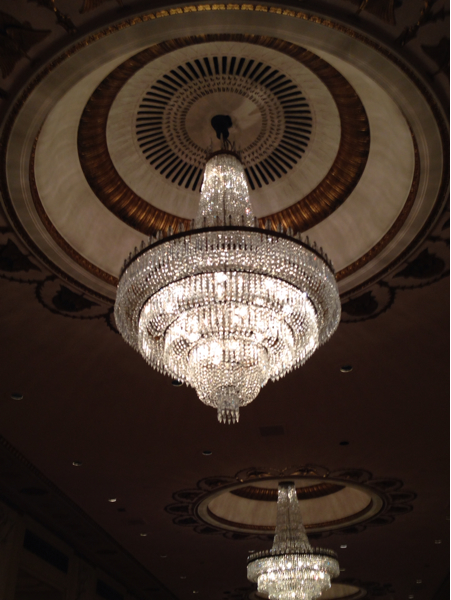 This room was modelled on the Hall of Mirrors from Versailles and to be honest quite reminded me of it before the guide mentioned the influence… mind you, slightly fewer 9′ tall golden candlesticks though. 🙂
This room was modelled on the Hall of Mirrors from Versailles and to be honest quite reminded me of it before the guide mentioned the influence… mind you, slightly fewer 9′ tall golden candlesticks though. 🙂
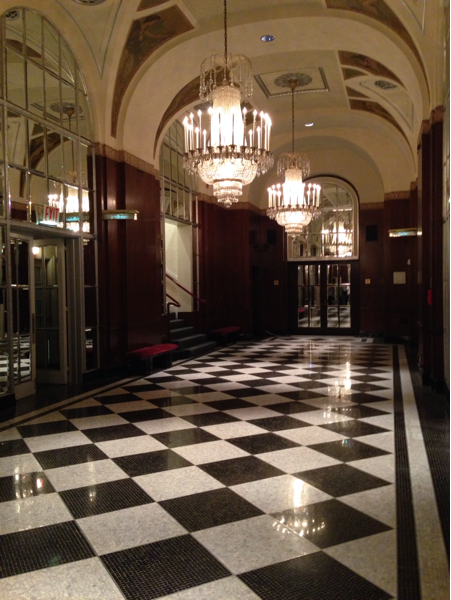
This room was particularly impressive and is called the Baseldon Manor Room, largely because nearly everything in it was purchased from a post-war ‘injured’ property – from the light fittings to the beautiful ceiling frescos that depict Dante’s Inferno. It really is very European and epitomises the ‘living museum’ ideals of the hotel precisely.
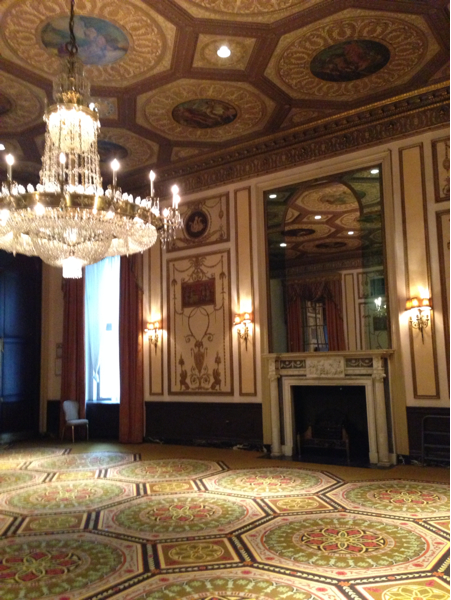
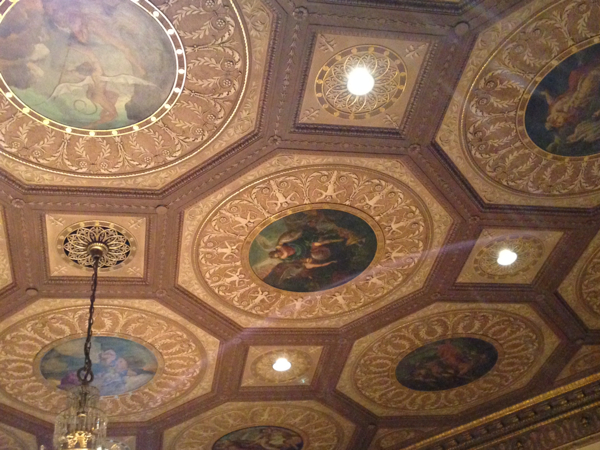
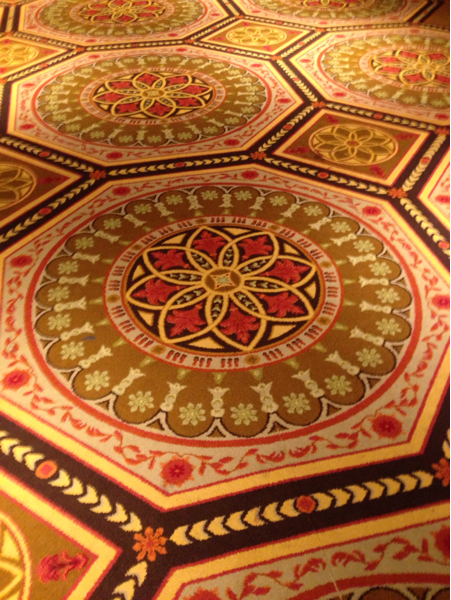
This is the cloakroom for guests to use when they come to functions at the Grand Ballroom… many famous and well-to-do guests have walked through these halls over the years, from presidents to film and rock stars.
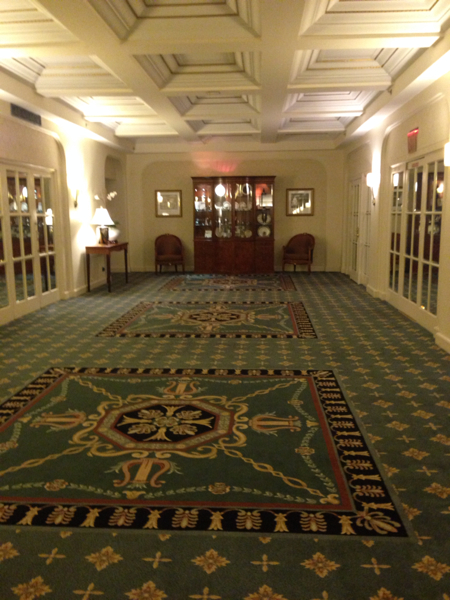
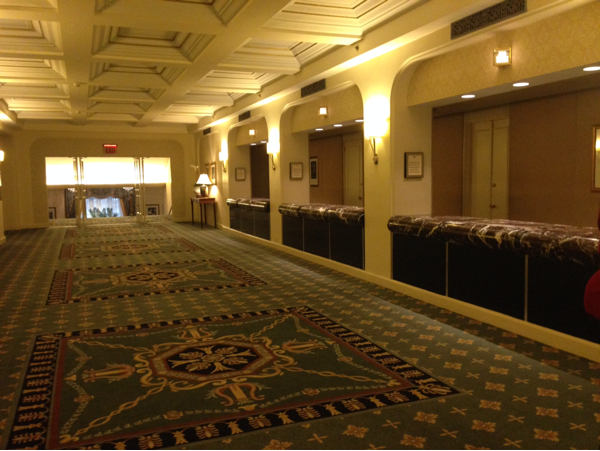 Here is Mr K looking very much at home on the back staircases (I say ‘staircases’, because there are several), of the Waldorf leading down to Oscar’s Restaurant where we went to have lunch after our very informative and beautiful tour.
Here is Mr K looking very much at home on the back staircases (I say ‘staircases’, because there are several), of the Waldorf leading down to Oscar’s Restaurant where we went to have lunch after our very informative and beautiful tour.
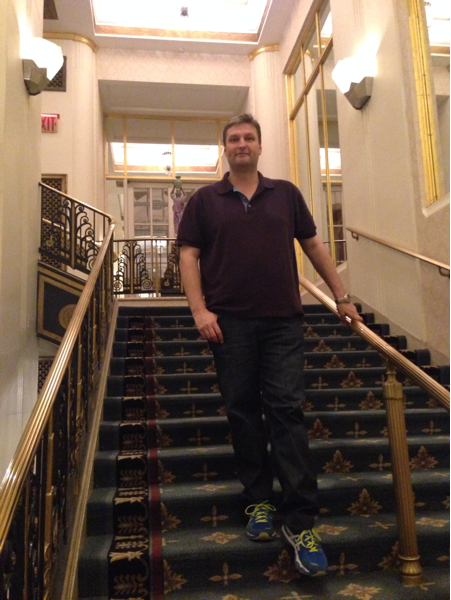 Lunch started off with a Waldorf salad (of course!), followed by grilled Atlantic salmon and a red velvet cake for dessert.
Lunch started off with a Waldorf salad (of course!), followed by grilled Atlantic salmon and a red velvet cake for dessert.
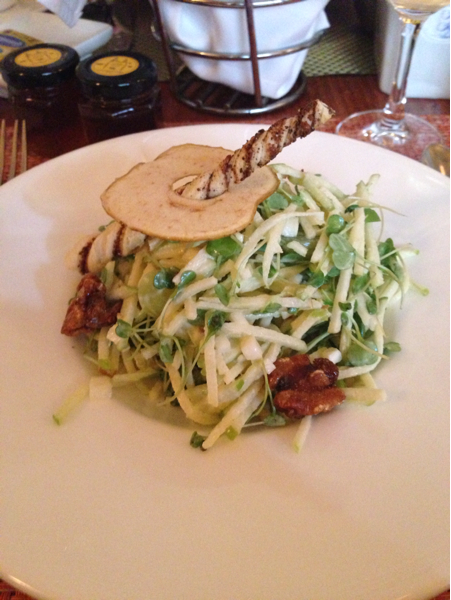 I know the tour is predominantly aimed at guests who want to know more about the hotel and see a bit more of it than just the various lobbies, but it can probably be booked by people not staying at the hotel, and I would thoroughly recommend it for anyone who is interested in Art Deco style of art and architecture or people with an interest in the heyday of New York society.
I know the tour is predominantly aimed at guests who want to know more about the hotel and see a bit more of it than just the various lobbies, but it can probably be booked by people not staying at the hotel, and I would thoroughly recommend it for anyone who is interested in Art Deco style of art and architecture or people with an interest in the heyday of New York society.
